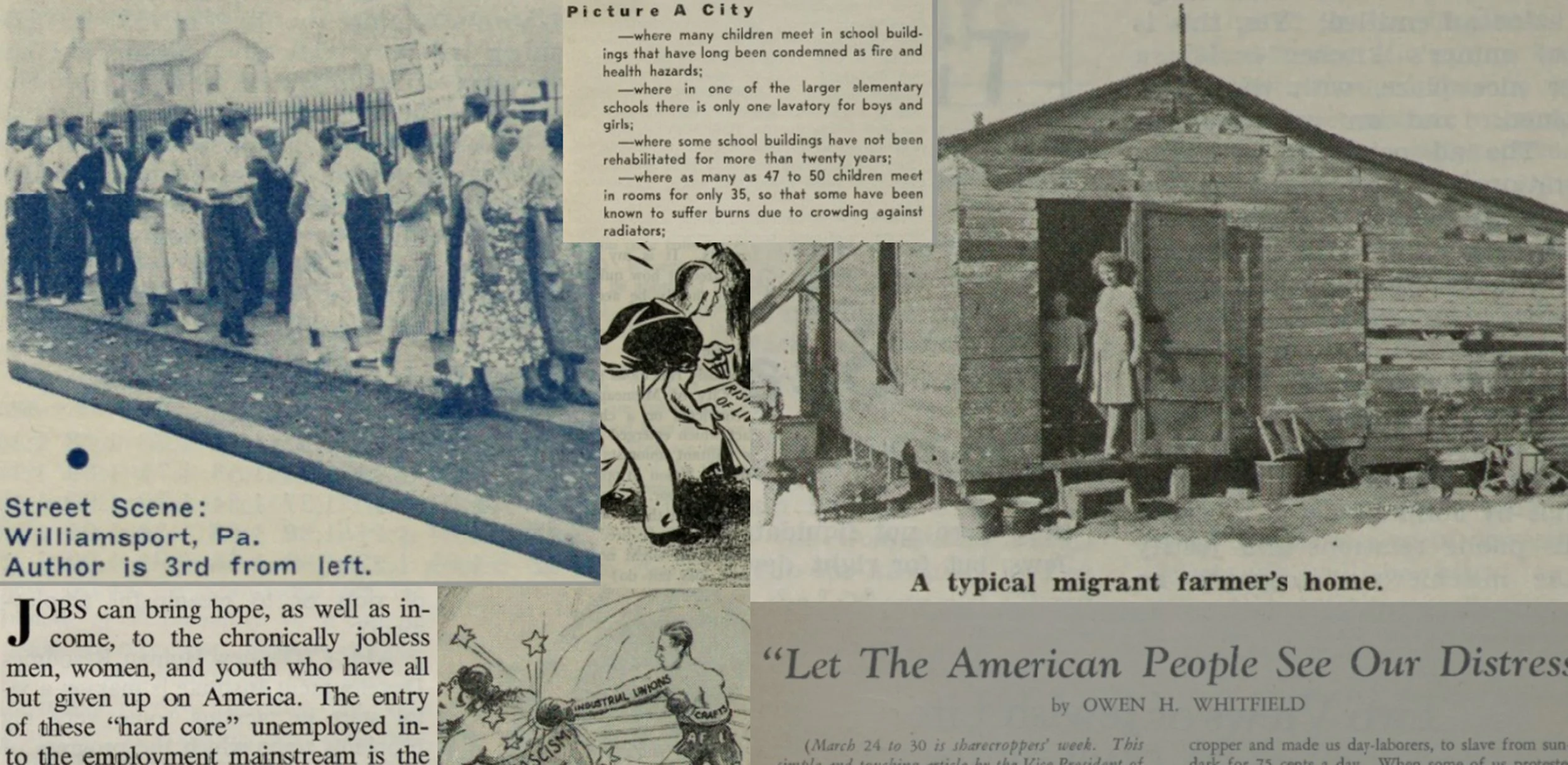
For Every Worker/Far Yedn Arbeter
The Workmen’s Circle saw itself as labor's conscience and companion. From its founding in 1900, the organization provided strike funds, bail money, and solidarity when workers were under attack. The Call’s pages trace the relationship between the Workers Circle and organized labor across seven decades, from supporting the great garment strikes to celebrating labor's evolution into a force for social change.
The Red Cross of the Labor Movement
The Workmen’s Circle was born from the same struggle that created the American labor movement: immigrant workers fighting exploitation in sweatshops and tenements. From Colorado miners’ strikes to the great garment workers' battles that built the ILGWU, the Workmen’s Circle stood as labor's safety net and strongest ally.
Highlights from the archive
Beyond the Shop Floor: Labor’s Struggle for Power
The twentieth century transformed American labor from scattered craft guilds into a unified force for economic and political change. From the great CIO split of the 1930s to the post-war strike wave, the Workmen’s Circle witnessed labor's evolution from a defensive movement focused on immediate workplace concerns to a confident political force demanding a voice in shaping American society.
Highlights from the archive
On Labor’s Frontlines
While established unions fought for contracts, organizers ventured into hostile territory to bring labor's message to workers who had never seen a union. From Pennsylvania factory towns, where mayors owned the mills, to California farms, where organizing was met with violence, these stories reveal labor's most dangerous work: building unions where none had existed before.
Highlights from the archive
The Needle Trades Transformation
No unions traveled further from their origins than those in the needle trades. Born in Lower East Side sweatshops, where immigrants toiled for pennies, organizations like the ILGWU and Amalgamated Clothing Workers became models of labor success. Under leaders like David Dubinsky and Sidney Hillman, these unions built hospitals, housing cooperatives, and retirement funds for garment workers, proving that labor could be an institution for social progress and human dignity.
Highlights from the archive

















